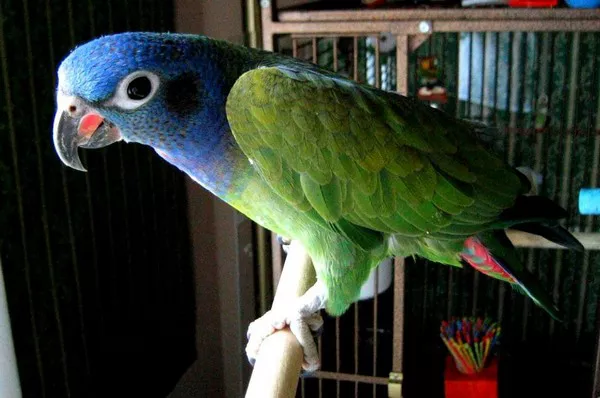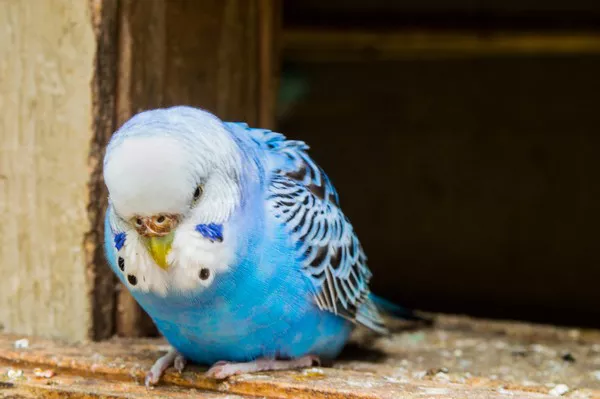Ah, the Miniature Schnauzer! Those wiry little bundles of joy with expressive eyebrows and a personality larger than life. As a proud Schnauzer owner or a prospective pet parent, you might be curious about many things, such as their energetic antics, their insatiable curiosity, and, of course, the journey they embark on from fluffy puppy to distinguished adult. One significant milestone in this journey is the shedding of their adorable puppy coat. So, when exactly do Miniature Schnauzers lose their puppy coat? Buckle up, fellow dog enthusiasts, as we dive into the fur-tastic world of Schnauzer coats, puppyhood, and the transition to adulthood!
The Fluffy Beginning: What is a Puppy Coat?
Before we tackle the burning question of when Miniature Schnauzers lose their puppy coats, let’s take a moment to understand what a puppy coat actually is. Puppy coats are the first layer of fur that these little dogs don after entering the world. It’s typically soft, fluffy, and incredibly cuddly—ideal for snuggles!
Characteristics of the Puppy Coat
Soft and Fluffy: The puppy coat is designed to keep the young pup warm and cozy. It is much softer than the adult coat, making it a delight for humans and a comfort for the pups.
Color Variations: Miniature Schnauzers can come in various colors, including salt and pepper, black, and white. The puppy coat might not always reflect the adult coat’s color perfectly. You might have a grayish puppy who turns into a striking black adult!
Temporary Nature: Puppy coats are temporary. They serve the purpose of warmth and protection during the early stages of life. As the pup matures, the coat will start to change, leading to the adult Schnauzer’s distinct look.
Growth Indicator: The coat’s texture and shedding can be indicators of growth. A healthy shedding process often reflects a well-nourished and growing puppy.
The Timeline: When Do Miniature Schnauzers Lose Their Puppy Coat?
Now, let’s get to the meat of the matter: when do Miniature Schnauzers lose their puppy coats? Generally, this transition happens between the ages of 5 to 8 months. However, the timeline can vary depending on individual factors, including genetics, environment, and overall health.
A Closer Look at the Timeline
5 Months: This is often the initial stage where you may notice the first signs of shedding. Puppy fur starts to loosen up, and you might find tufts of fluff around your house—just in time for you to consider investing in a quality vacuum cleaner!
6 Months: During this period, the shedding becomes more noticeable. You might see patches where the puppy coat is thinning out. This is normal and part of the transition.
7 Months: The transition usually peaks around this time. Expect to see more hair on your clothes and furniture than usual. Some owners might even consider this a great time to invest in a lint roller, as your furry friend can turn your stylish outfit into a fur coat in seconds!
8 Months: By the time your Miniature Schnauzer hits the 8-month mark, the adult coat should start to emerge fully. The adult coat is more wiry and is characterized by its distinct texture, which is very different from that fluffy puppy coat.
Beyond 8 Months: While most of the shedding and transition will be complete by now, some Miniature Schnauzers may continue to lose their puppy coat until they are around 12 months old. Each Schnauzer is unique, so don’t be alarmed if your pup takes a bit longer to shed that puppy fluff!
The Science Behind the Shedding
Understanding why and how this shedding occurs can help alleviate concerns for new Schnauzer parents. Shedding is a natural process linked to several biological factors. Let’s break it down a bit more:
Hormonal Changes
As your Miniature Schnauzer grows, hormonal changes trigger the transition from puppy to adult coat. The increase in hormones leads to changes in the hair follicles, prompting the puppy hair to fall out and make way for the sturdier adult fur.
Seasonal Influences
Miniature Schnauzers, like many breeds, may be influenced by the seasons. In some cases, they may shed more during the spring or fall. This seasonal shedding can be more pronounced as they transition out of their puppy coat.
Nutrition Matters
A well-balanced diet is crucial for a healthy coat. If your Schnauzer is on a high-quality diet, the shedding process will generally be smoother. Nutritional deficiencies can lead to excessive shedding, dry skin, and other coat-related issues. It’s vital to ensure your pup is getting the right nutrients during this growth phase.
Coping with the Shedding: Tips for Miniature Schnauzer Owners
Shedding can be a hassle, especially if you’re unprepared. Here are some tips to help you cope with your Miniature Schnauzer’s transition from puppy coat to adult coat:
Regular Grooming
Regular brushing is essential during this transition period. Not only does it help manage the shedding, but it also keeps your pup’s coat healthy and encourages new hair growth. Aim for at least two to three grooming sessions per week. Use a slicker brush or an undercoat rake to make the process easier.
Bathe with Care
Bathing your Schnauzer can help remove loose hair and keep their coat clean. However, avoid over-bathing, as it can strip natural oils from the skin. A bath every 4 to 6 weeks is usually adequate. Use dog-specific shampoos to ensure you don’t irritate their skin.
Nutritional Support
Invest in high-quality dog food. Look for options rich in omega-3 fatty acids, which can promote a healthy coat. You might also consider supplements like fish oil, but always consult your veterinarian before adding anything new to your pup’s diet.
Hydration
Keeping your dog well-hydrated is crucial. Dehydration can lead to dry skin, which may worsen shedding. Always provide fresh water, especially during warm weather.
Deshedding Tools
Consider using deshedding tools designed for Miniature Schnauzers. Tools like the Furminator can help effectively remove loose fur without damaging the remaining coat.
Create a Shedding Zone
If possible, create a designated area for grooming. This will help contain the fur mess to one location, making cleanup easier.
The Distinct Adult Coat
Once your Miniature Schnauzer has completed the transition, you’ll be left with their beautiful adult coat. The adult Schnauzer coat is unique and comes with its own set of characteristics:
Characteristics of the Adult Coat
Wiry Texture: Unlike the soft puppy coat, the adult coat is much denser and has a wiry texture, giving Schnauzers their signature look.
Low Shedding: While they do shed, Schnauzers are generally considered to be low-shedding dogs. This makes them more suitable for people with allergies.
Grooming Needs: The wiry coat requires regular grooming to keep it looking its best. Regular clipping every 6 to 8 weeks is often recommended to maintain their iconic Schnauzer appearance.
Variety of Colors: Adult Schnauzers can be seen in various color patterns. The transformation from puppy to adult can result in a noticeable change in color as well.
The Importance of Grooming
Grooming is not just about aesthetics; it’s also about the health of your Miniature Schnauzer. Regular grooming can help detect skin issues, parasites, or other health concerns early on. By grooming your pup frequently, you can build a strong bond and create a positive experience around grooming, which will be essential throughout their lives.
Benefits of Regular Grooming
Skin Health: Regular brushing helps distribute natural oils, promoting a healthy coat and skin.
Bonding Time: Grooming can be a wonderful bonding experience between you and your Schnauzer, allowing you to interact and strengthen your relationship.
Parasite Prevention: Regular grooming sessions make it easier to spot fleas, ticks, or other skin irritations early, allowing for prompt treatment.
See Also: Are Miniature Schnauzers Good Watch Dogs?
Less Shedding Indoors: By brushing your dog outside, you can significantly reduce the amount of fur that ends up on your furniture.
Common Misconceptions About Miniature Schnauzers and Shedding
As with any breed, there are several myths and misconceptions surrounding Miniature Schnauzers and their coats. Here are a few common ones:
“Schnauzers Don’t Shed at All”
While Miniature Schnauzers are considered low-shedding dogs, they do shed. Regular grooming and maintenance can minimize this, but no dog is entirely free of shedding.
“Puppy Coats are the Same for Every Dog”
Every dog is unique. While there is a general timeline for shedding the puppy coat, factors such as genetics, environment, and health play a significant role in how and when this shedding occurs.
“It’s Too Late to Start Grooming an Adult Schnauzer”
It’s never too late to start grooming! Adult Schnauzers can learn to enjoy grooming sessions. Patience and positive reinforcement can help them adjust to grooming routines.
Conclusion
In the end, the transition from puppy coat to adult coat is a vital part of your Miniature Schnauzer’s growth journey. Understanding this process can help you prepare for the changes that come with it. Embrace the fluff while it lasts, and prepare for the unique personality and spirited charm that your Schnauzer will bring as they transition into adulthood.
As you embark on this journey with your furry friend, remember to take plenty of pictures, because those puppy days go by faster than a Schnauzer chasing a squirrel! The love, laughter, and companionship these adorable pups bring into our lives are worth every fur-covered couch and every vacuuming session.
So, whether you’re in the thick of puppy fluff or on the brink of transitioning into a distinguished adult coat, cherish every moment with your Miniature Schnauzer. They truly are one of a kind, and their coat journey is just another chapter in the delightful story of their lives. Happy grooming!
Related Topics:


























